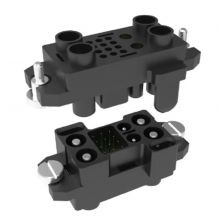80\\125\\200\\250A CCS2 IEC 61851-23 1-Phase Vs 3-Phase EV Charging 20kw 50kw 60KW 100KW 160KW
Negotiable /Pair
Min.Order:10 Pairs
Quick Details View All >
Shenzhen HuaCanXian Electronic Co., Ltd
Product Details
1. The CCS2 IEC 61851-23 standard is a part of the conductive charging system for electric vehicles, specifically the standard for DC electric vehicle charging stations.
2. CCS2 is a part of the European electric vehicle charging standards, which covers multiple aspects including interface standards, power supply standards, vehicle standards, communication standards, and universal standards. Among them, the IEC 61851-23 standard specifically targets DC electric vehicle charging stations, providing specific specifications and requirements for such charging stations to ensure their safe, efficient, and reliable operation. This standard is part of the IEC 61851 series of standards, which aims to establish mechanical, electrical, communication, EMC, and performance requirements for charging equipment of electric vehicles (including light-duty electric vehicles) to ensure the safety and efficiency of the charging process.
3. In addition, the CCS2 standard also involves other related standards, such as the IEC 62196 series standards and ISO standards, which together form a comprehensive framework for European electric vehicle charging technology, aimed at promoting the widespread adoption of electric vehicles and standardizing charging infrastructure. By implementing these standards, the convenience of using electric vehicles can be improved, compatibility issues can be reduced, and the growth and development of the electric vehicle market can be promoted
4. 1-Phase vs 3-Phase Charging Process
5. What’s happening during charging? Electricity flows from the power grid through the EV charger and into your electric car. And here, we come to the main distinction between the phases.
6. 1-phase charging: Power flows through a single conductor (wire). Max charging power - 7.4 kW (In some countries, single-phase charging is only permitted or possible at lower charging power.
7. 3-phase charging: Power flows through three conductors (wires). Max charging power - 11 or 22 kW.
8. So basically, the number of phases your car has only plays a role during AC charging. When using a DC charging station, only the max DC charging power of your electric vehicle and the charging station matters.
9. 1-Phase vs 3-Phase Charging Process
10. What’s happening during charging? Electricity flows from the power grid through the EV charger and into your electric car. And here, we come to the main distinction between the phases.
11. 1-phase charging: Power flows through a single conductor (wire). Max charging power - 7.4 kW (In some countries, single-phase charging is only permitted or possible at lower charging power.
12. 3-phase charging: Power flows through three conductors (wires). Max charging power - 11 or 22 kW.
13. So basically, the number of phases your car has only plays a role during AC charging. When using a DC charging station, only the max DC charging power of your electric vehicle and the charging station matters.
Contact Supplier

You May Like

New Products
Popular Searches
Recommended Products
Find Similar Products By Category